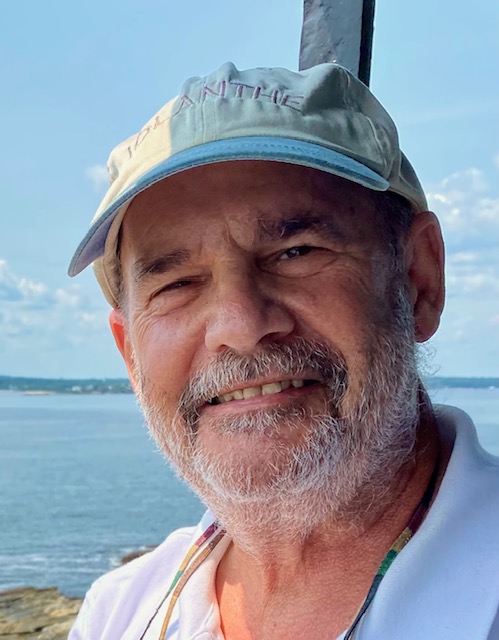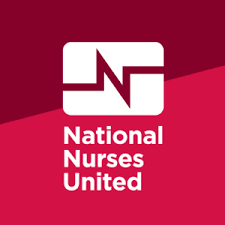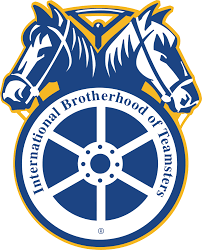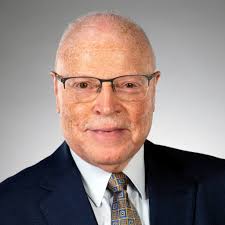Bob Yaro is an urban and regional planner who has led a career spanning both the academic world and community and transportation planning for local entities across greater New England. For about the last 15 years, his path has kept coming back to an ambitious plan to build a new train corridor between Boston and New York that would skirt around the Amtrak-owned New Haven train corridor, which is one of the busiest in the country.
Yaro will appear at a panel at the upcoming Building America’s High-Speed Rail Network conference sponsored by LaborPress to discuss the prospects of the proposed high-speed rail line that he had a foundational role designing.
LaborPress recently connected with Yaro ahead of the conference to discuss the origins of the New York-to-Boston proposal and his role in bringing it to the attention of federal authorities and legislators. This conversation has been edited for brevity and clarity.
LaborPress: Can you first of all walk me through your career in planning and how that led you to get interested in high-speed rail?
Yaro: I’m an urban and regional planner. My career started in the early seventies working for the city of New Britain, Connecticut, and then the city of Boston, and then for the Commonwealth of Massachusetts. For Boston, for example, I was doing open space and then community preservation at a time when there was a lot of housing abandonment going on and so forth. I ended up in New York running the Regional Plan Association, which is a civic group starting in 2014. I was there for 25 years and one of the big things that we did was transportation planning for the New York Metropolitan region.
From 2002 to 2020, I was a professor at the University of Pennsylvania in the graduate design school where urban planning is located. In 2009 Amtrak came out with a proposal for a $50 billion investment in the Northeast corridor that would’ve produced about a 15-minute travel time savings between DC and New York, and an equivalent savings between Boston and New York. At the moment, basically the Acelas move an average of about under 60 miles-per-hour between Boston and New York. This would’ve been a very, very modest improvement. Wearing both hats, the regional plan hat and the Penn hat, I assembled a team of faculty and students and then outside engineering consultants, and we came up with an alternative for high-speed rail alternative in the Northeast corridor, which through an unusual set of circumstances, got the attention of Ed Rendell, the governor of Pennsylvania.
Ed called me up soon after we completed this report for an this alternative, which was a mix of mostly existing right-of-way existing corridor south of New York, but then this new corridor east on Long Island using existing rail and utility lines to get around the the highly congested new Haven Line Corridor in Connecticut, where it would just be very difficult if not impossible to do world-class, high speed service. So we’re sitting in Rendell’s office presenting it, and he calls out to his assistant, said, “Get Joey on the phone.” I had no idea who Joey was. And Joe Biden gets on the phone. Biden says, “When are you presenting this to me? I’ve been waiting 30 years for something like this.”
And so a few weeks later, we found ourselves in the Roosevelt Room of the West Wing presenting a bunch of faculty and students presenting this idea to the Vice President and the Federal Railroad Administrator and other luminaries, some members of Congress and Senators and so forth. It was very well received, and Biden instructed the FRA administrator to get going on this thing — to make this happen. That became the impetus for a true environmental impact statement led by the Federal Railroad Administration, called NEC (Northeast Corridor) Future, which was completed in 2017 after Biden left office. At that point, the Trump administration or just the spirit of the times, they basically didn’t pursue the high-speed rail alternative. They looked at it and decided the easiest thing to do would just be to patch up the existing corridor and make it a conventional 60 mile-per-hour corridor. I just felt that simply wasn’t good enough.
There’s so much being done between New York and DC that it’s gonna keep Amtrak and the FRA busy for the next 20 years making those investments. But in the North End [between New York and Boston] it’s a fairly limited set of investments — replacing moveable bridges in Connecticut and so forth. I thought this was the time to move ahead with a proposal with the Boston to New York City alternative. And now, I’ve had a coalition of civic leaders, business leaders and rail advocates called the North Atlantic Rail Alliance that we created in 2019, and we’ve been pursuing this ever since then. In 2020, we got a group of 23 members of members of the house, a number of senators convened by [Long Island Congressman] Tom Suozzi, who’s a big advocate for this idea, and particularly for the Long Island section of it.
There are now several high-speed rail projects getting underway across the country. The Bright Line West project between Southern California and Las Vegas is going to be the first operational high-speed rail project in the country. Their goal is to have that up and running in time for the LA Olympics in 2028. I feel, and a number of the other high-speed rail advocates feel, that that’s gonna be the impetus for getting a bunch of these others in the ground and under construction. We’ve had a wonderful group of engineers helping us with the design and with cost estimating. And we had a London-based company called Steer Group, which has done a business plan for the project that concluded that it could produce hundreds of billions of dollars in long-term benefits to the seven-state region between New York and New England.
LaborPress: Could just verbally explain how the route would deviate from the New Haven rail line?
Yaro: [The New Haven line] is a hundred-plus year old corridor that winds its way between Gand Central and New Haven — it’s highly constrained. You know, it’s got the wall-to-wall suburbs, so it would be very hard to straighten it or widen it at the moment. It’s the busiest commuter rail corridor in the country. So in looking at alternatives, we said, well, there are a bunch of underutilized rail lines and public and electric utility corridors owned by the state of New York that could get you as far as Port Jefferson on the Long Island side. And there would be a significant amount of tunneling and some via ducts in places like Jamaica to get past Jamaica Station, and whether it’d be a stop at JFK, um then there would be a 16 mile long tunnel under the sound.
We’ve argued that it ought to be built, and this is all going to be subject of an extensive environmental impact statement and civic engagement process. These things typically are being built with tunnel boring machines way below the bottom of a body of water by the sound. So there should be no impacts on the environmental resources of the sound. To minimize any environmental impacts, we crossed the sound and come up in Milford, east of the Housatonic River. We use the existing New Haven like corridor from Milford to New Haven where there is capacity and, and an opportunity to widen the court if necessary, to get to New Haven. And then instead of going east from New Haven across Eastern Connecticut and Western Rhode Island, where there was a lot of opposition to any proposal to widen or straighten the corridor, we would propose to go north on existing rail and highway rights of way to Hartford.
Then there are two alternatives: one that is being supported by the state of Rhode Island, which would go east across eastern Connecticut and Western Rhode Island to Providence, and then back into the existing northeast corridor where, again, it’s relatively straight and fast and could be adapted to high speed. Or another alternative would be to use the Hartford line that is owned by Amtrak, that goes up to Springfield, turn that into a high speed corridor, and then go east from Springfield to Worcester and Boston. The Commonwealth Massachusetts has expressed some interest in that alternative.
LaborPress: Can you go through some of the bullet points of the economic benefits of this route?
Yaro: We think that this becomes a game changer for the economy of the whole seven-state region New England and New York. It fundamentally changes the economic geography of the region. Connecting the big Boston tech economy with the big economy in the New York Metro benefits both of those bookends. But then there are enormous benefits for Long Island. And you could cut travel times in half from Suffolk County into New York City. It’s been a hundred year dream of creating uh, a bridge of a tunnel between Long Island and New England. There are absolutely no connections between the economies of those two places. It could fundamentally change labor markets, housing markets, kind of innovation economy connections between research universities and teaching hospitals in New York City and on Long Island and New England.
One of our other co-chairs was Luke Bronin, the former mayor of Hartford Connecticut. Bronin was looking at this thing as a game changer for Hartford. Hartford has been struggling since the loss of a manufacturing economy 50 years ago. And Hartford is basically completely detached from the economy of New York and Boston. And so it really has nothing to do with those places. And the same is true for Springfield. It’s ironic because Hartford and Springfield used to be the tech centers of the country. There would be enormous advantages for these mid-sized cities. New Haven would be 37 minutes to Manhattan instead of two hours from Manhattan. Its residents would have access to jobs on Long Island and vice versa. There’s labor shortages in both places. It just opens up a world of new possibilities for people that live in one place and have access to jobs in another.
LaborPress: So what would the next step look like? Once you set this proposal in motion and build the coalition around it, what is the next phase of action that you need to kickstart it?
Yaro: We’d be looking for the Federal Railroad Administration to fund a corridor planning study. It’s basically a detailed feasibility engineering market market study and so forth that they are doing across the country. They have a pretty ambitious program of identifying high potential high-speed rail corridors. We wanna see that funded, and that could be through any of the states or counties or municipalities that are served by the line. We’d like to see that expedited. And then I think assuming that there is another round of federal high-speed rail funding, which we think there probably will be, because if these projects are all gonna be mature and ready to go, we’d like to see this project uh developed to the point where it could be put on that list of, um, eligible projects.






